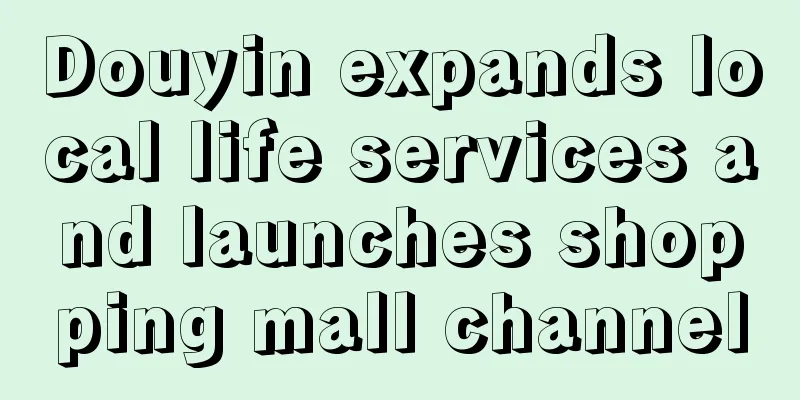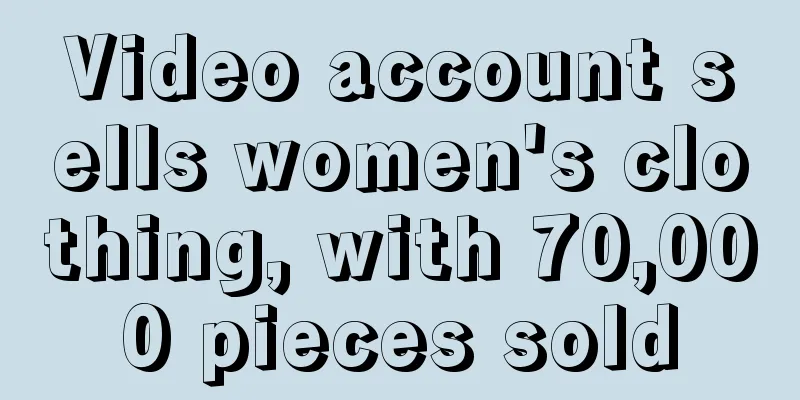What did ClickUp do right to achieve 150 million ARR in 6 years in the red ocean market?

Project collaboration is a recognized red ocean track, but there is a company that only joined the track in 2017. The founder spent three years building the product and verifying PMF (Product-Market Fit, which refers to the best fit between the product and the market). Subsequently, from 2020 to 2021, it quickly completed three rounds of financing, with a total financing amount of more than 535 million US dollars, and the company's valuation reached 4 billion US dollars. In 2022, when many SaaS companies encountered cash flow problems and growth challenges, it continued to grow against the trend, doubling the company's revenue from US$75 million to US$150 million. It is ClickUp, a productivity platform dedicated to bringing all work together in one place, hoping to replace all other project collaboration software with one application. After researching, I found that ClickUp perfectly fits Teddy’s previous summary of “Ten Years of Experience: 9 Tips for International SaaS Entrepreneurship” and AfterShip’s other insights into international SaaS entrepreneurship, including how to view financing, how to select talent, and so on. So in this article today I would like to share with you the story behind ClickUp’s success, hoping it will be helpful to some friends who are starting businesses in the international SaaS field. # Create products based on your own pain points and stand beside your customers to complain for themZeb Evans, the founder of ClickUp, is a person who has an extreme pursuit of time and efficiency. He originally planned to start a business to make another product. However, during the entrepreneurial process, he found that although the team did not have many people, they needed to use many different project collaboration software. For example, Jira+Trello is used for R&D, Asana is used for marketing, and Confluence is used for content management. The team has to switch back and forth between different software every day, which greatly affects efficiency. So he plans to make an all-in-one project collaboration software to solve internal problems. More than a month later, the prototype of this All-in-One collaboration tool was born. Even though it was only an MVP version, it was able to meet the daily collaboration needs of small teams by distinguishing different Spaces. When Zeb saw how useful this tool was, he immediately came up with the idea of "making an all-in-one project collaboration software to replace all other project collaboration software" (the picture below shows ClickUp's competitor). So what started out as an internal tool to solve its own pain points began to transform into a product that provides services to the outside world, namely ClickUp.This story is similar to the founding stories of Shopify, Zoom and AfterShip, and once again proves that " it is best for founders to create products based on their own pain points ." However, Zeb went a step further on this basis. In addition to making the product and bringing it to market, he continued to criticize other project management software by creating blogs and videos, in order to gain public attention and guide more people to use ClickUp . As he shares, he attracted ClickUp's first 100 customers through blog posts around competitors Asana and Trello. ClickUp also set up a special page on its official website to compare the advantages and disadvantages of its products with those of other competitors, and then they checked off each item they listed. This reminds me of when Salesforce first emerged, it also used the "bumping" method to acquire a group of seed customers who were dissatisfied with traditional software. Continuous content marketing + daily blogs targeting long-tail keywords have indeed brought a lot of natural traffic to ClickUp, which is also one of the key factors for ClickUp's rapid growth.This case also gave us some new insights: First, when starting a business, don’t do exactly the same thing as others. Instead, have differentiated positioning and value, such as ClickUp’s “All-in-One” and Salesforce’s early focus on “SaaS”. Second, in the red ocean, although the existing giant products have many customers, there is definitely a group of people who are dissatisfied with these products. If you can stand up and speak for these customers and meet their needs, you may win their trust and support. # Try to use your own money to build products before reaching PMFClickUp did not raise any funds in the first two years of its establishment. Instead, founder Zeb used his own money to start the business because he believed that this would give the founder and team enough freedom to make the right decisions and build the best product in the early stages. At the same time, starting a business with your own money will also bring greater pressure, requiring founders to seriously consider from the very beginning how to sell their products and services and earn enough money while creating value for customers. This is very consistent with the philosophy that Teddy has always advocated. Teddy has always encouraged founders to use their own money to develop products as much as possible in the early stages, because using their own money will hurt.At the same time, we believe that compared to actively looking for investors for financing, a better way is actually to concentrate on making good products, winning customer recognition, and letting investors come to us actively.ClickUp once again proves this concept. From its founding in 2017 to the end of 2019, ClickUp has been focused on building products and validating PMF. According to Zeb, they achieved NPMF (Natural Product-Market Fit) when they reached $20 million in ARR, which means acquiring customers through the growth and spread of the product itself and natural traffic, rather than through spending money and advertising. Then they decided to accelerate expansion in 2020, so they stepped on the accelerator and completed three rounds of financing in 18 months, raising US$537.5 million and bringing their valuation to US$4 billion. Sufficient ammunition also allows them to continue to accelerate expansion in 2021 and 2022, and increase ARR to US$150 million. So I would like to remind my friends who are starting businesses in the international SaaS field: In the early stages of your business, don’t pursue financing excessively. Instead, focus on making a good product. Once you have a group of paying customers who recognize your product and a certain amount of revenue, investors will naturally come to you. Friends who want to know more are also welcome to read "SaaS Capital Winter? What the market lacks is not money, but good products". # Don’t work in isolation when iterating your product, but push it to the market as soon as possible to get feedbackClickUp’s philosophy for product iteration is: “Completion is more important than perfection. Release as soon as possible, try and fail as much as possible, and solve problems when they arise.” Since its launch, ClickUp has almost always maintained a release rhythm of one version per week. According to Zeb, they will read every email from customers, reply to every ticket from customers, and select those features that customers vote as very important and quickly develop and launch them. This is also in line with AfterShip's philosophy for SaaS product iteration: When iterating SaaS products, we cannot work in isolation, but must push them to the market as quickly as possible to obtain feedback.Of course, there are many ways to get feedback, such as AB testing, fake door testing, etc. Friends who are interested can further read "SaaS 102 | How to use a better MVP concept to do SaaS". In addition, although ClickUp said that it wanted to build an all-in-one productivity platform, they did not choose to do all the functions themselves, but still integrated and connected more than 1,000 other software. This is also consistent with what Teddy shared before: "International SaaS needs to maintain open connections and work together to create better user experience and value for customers." # When building a team, look for people who are passionate and grow quicklyFinding talent is a topic that every entrepreneur cannot avoid, and ClickUp has taken the following approaches in this regard: First, look for realistic optimists.Because in the early stages of entrepreneurship, one will encounter various doubts and challenges. If a person is not optimistic, he will easily be defeated by various pressures and will not be able to do things well. However, if a person is blindly optimistic, he or she may easily become out of touch with reality and unable to make the best choice based on current resources. Second, look for people who share the same cultural values, who have passion, courage, and work ethic, even if they don’t have enough experience and resume at the moment.Every entrepreneur hopes to find outstanding talents with strong capabilities, rich experience, consistent cultural values, and strong recognition of the company. But we must admit that for startups, we often do not have the opportunity to attract outstanding talents who have been proven by the market and have sufficient experience, so at this time we usually need to make some trade-offs in terms of ability, experience, values, etc. The approach taken by ClickUp and AfterShip is that we will give priority to finding people who have consistent cultural values, passion, courage, and professional ethics, even if they do not currently have sufficient experience and resume, and then give these talents enough space and challenges to allow them to grow rapidly with the company. Of course, AfterShip will also place greater emphasis on open-mindedness, learning ability, and long-termism. Interested friends can read "Ten Years of Experience Summary: What Kind of Talents Are More Likely to Succeed in International SaaS?" Third, don’t look for 10x engineers (10x means that the work efficiency is 10 times higher than that of ordinary engineers), but look for 5x engineers.Because 10x engineers are often as scarce as unicorns, and finding enough 5x engineers can also help you quickly develop product features and deliver them to customers. # SummarizeClickUp is an all-in-one productivity platform founded in 2017 that focuses on the red ocean track of project collaboration, but has achieved an ARR of US$150 million in 6 years. ClickUp’s success once again confirms the methods we shared earlier for doing international SaaS: 1. It is best for founders to develop products based on their own pain points; 2. It is best not to raise funds before reaching PMF, but to start a business with your own money; 3. When iterating SaaS products, we cannot work in isolation, but must push them to the market as quickly as possible to obtain feedback; 4. International SaaS companies need to maintain open connections and work together to create better user experience and value for customers; 5. When building a team, look for people who are passionate and can grow quickly. In addition, ClickUp also showed us the value of All-in-One products and how to help companies continuously obtain organic traffic through content marketing. If this article is helpful to you, please leave a message and forward it so that more people can learn about the entrepreneurial experience in the international SaaS track. |
<<: Female consumers, the eternal growth of brands
Recommend
In 2023, overseas advertising and marketing will have "three major changes"
With the development of AI, the global advertising...
The number of views has exceeded 60 billion, and Douyin has a new top streamer
Undoubtedly, the hottest stars recently are Hehua,...
Why has Xiaomi Auto been slow to announce its price?
Since Xiaomi Auto held its technical conference, t...
How can I leave a review on Amazon without getting rejected? How long does it take for the review to be displayed?
There are many rules on Amazon's cross-border ...
How to apply for the Amazon Logistics New Product Warehouse Promotion Program?
As one of the world's largest e-commerce platf...
A comprehensive review of the hot words on the Internet in 2022, I am really confused!
Whether you are doing marketing or public relation...
Can Amazon withdraw cash every day? What are the rules?
After you open a store on Amazon, if there are ord...
Double 12 "online shopping carnival" fades away
This year's Double 12 ended in a lukewarm mann...
Ten thousand words long article: The underlying logic of the successful incentive system
This article starts with several African legends, ...
How can something so ugly that it hurts the eyes become a trend?
Recently, the results of Taobao's Ugly Things ...
The cost of advertising on Xiaohongshu is getting higher and higher? How to manage traffic?
How to manage traffic has an important impact on e...
Which Lazada site has the best traffic? How to choose?
If you choose cross-border e-commerce, you must ch...
Taobao’s new regulations make it clear that it is more difficult to attract traffic to private domains!
With the release of Taobao’s new regulations, this...
Big model price cuts, a war with no winners
In just one week, large models have entered the &q...
How to file a complaint against follow-up sales on Amazon? What is the method?
In the process of opening a store on Amazon, there...









